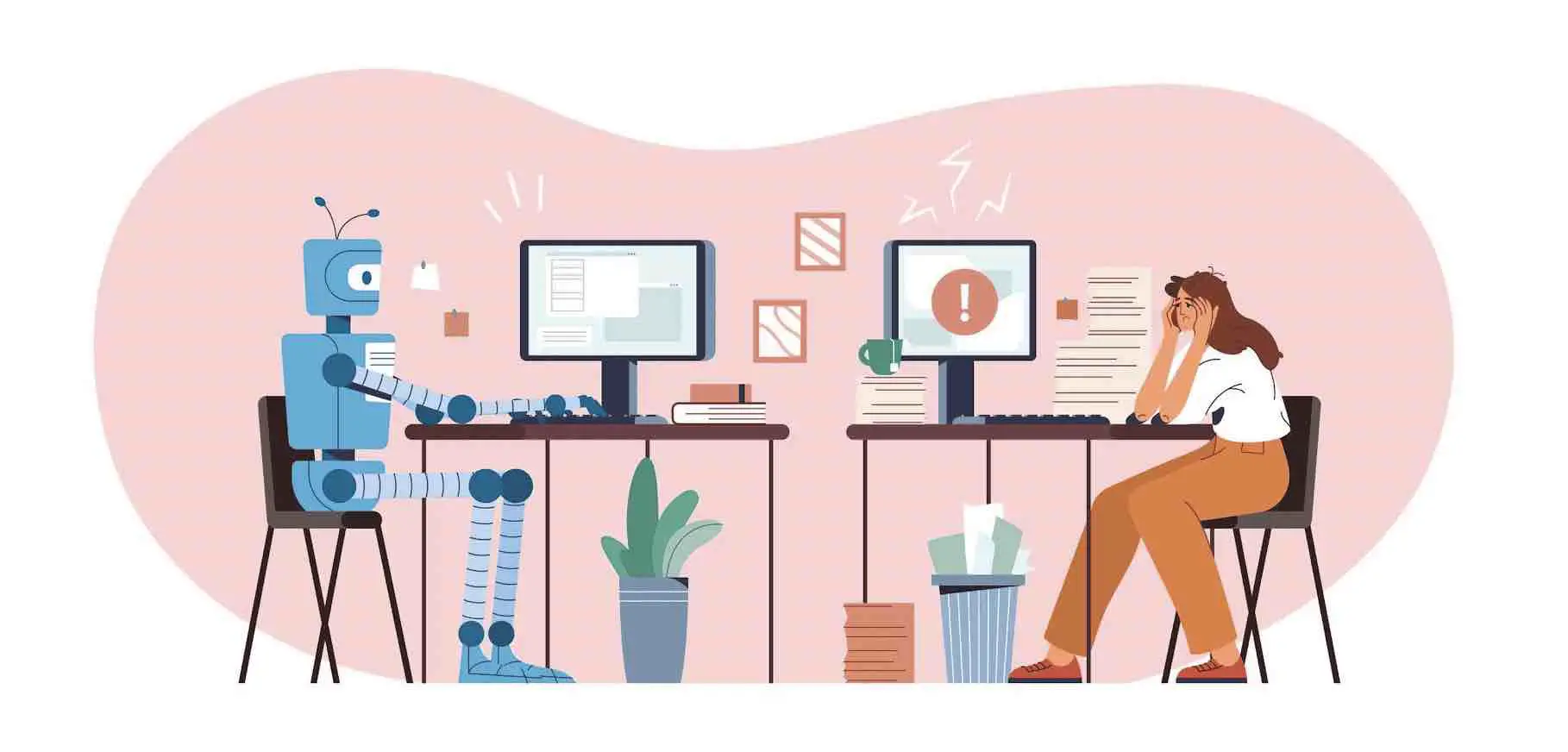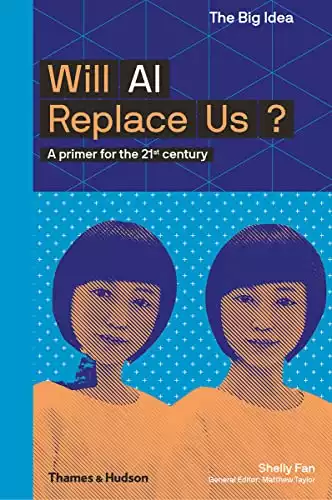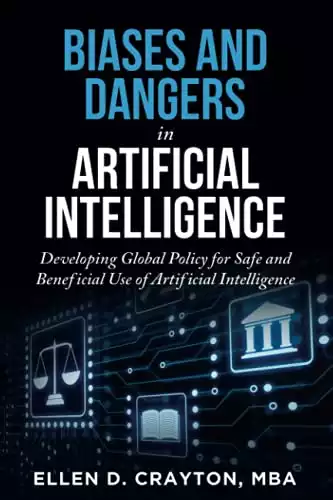Overview of AI and Job Loss
AI based job displacement: AI is changing work as we know it. It can do many tasks that people used to do. This makes some people worried about losing their jobs. If a machine can do the work, companies may not need as many people. This means that some people could lose their jobs. But there’s another side to the story. AI can also create new kinds of work. Some jobs didn’t exist before AI came along. Now, these jobs are important. People need to manage AI, fix it, and make sure it works well.
So, there’s a lot of talk about AI and jobs. Some say it’s bad, others say it’s good. But everyone agrees that it’s a big deal. AI is not going away. It will be part of our future. We need to figure out how to live and work with it. So, what’s the answer? It’s hard to say right now. There’s a lot we still don’t know. But one thing is clear: AI is changing things, and we need to be ready.
Industries Most Affected by AI
Technological advancement is transforming various industries, particularly affecting the labor market. Some jobs face greater vulnerability than others due to the rise of intelligent machines. In sectors like transport, factories, and customer service, AI-driven automation could have a significant economic impact. Self-driving cars are a prime example, with the potential to replace taxi and truck drivers, thereby reshaping the entire business model of the transport industry.
Factory work is also shifting due to automation. Robots can execute a range of tasks more efficiently than human workers, boosting productive activity at the cost of job loss. This change affects not just blue-collar jobs but also white-collar workers. For example, customer service roles are now being filled by AI chatbots capable of handling multiple tasks, from problem-solving to answering questions.
Still, some industries might benefit from AI, expanding their workforce as a result. Tech companies leading AI development are a case in point. The demand for machine learning specialists and people with the requisite skills in this area is growing. These roles often require strong communication skills, an area where AI still falls short.
The healthcare sector offers another optimistic angle. AI can assist medical professionals in data analysis, making their jobs easier and more efficient. While automation handles repetitive tasks, human skills like empathy and complex decision-making remain irreplaceable in healthcare. The potential impacts here include more jobs and an enhanced business model, as AI tools help medical staff provide better care.
Short-Term vs Long-Term Impact
In the short term, jobs involving simple tasks face immediate risks, affecting millions of people. Cashiers and bank tellers are prime examples, as self-checkout machines and automated banking services rise in use. Assembly lines, too, are rapidly automating. As the range of tasks machines can handle increases, there’s a shared agreement that these changes are happening swiftly.
Looking ahead, the risk landscape could shift. Generative AI, specialized in creative thinking, could make more complex job categories obsolete. This complicates the picture, as some jobs might actually see an increase in demand due to the benefits of automation. Yet, the overall trend suggests a heightened risk of computerization across a broader array of jobs.
Staying current with new skills will be crucial for everyone. Job markets are dynamic, and adaptability will be key. While changes might start slowly, they could accelerate unexpectedly, making it essential to be prepared. With automation’s benefits come significant challenges, and the need for a flexible, up-to-date skill set has never been more critical.
White-Collar vs Blue-Collar Jobs
The common perception that only blue-collar jobs are at risk from AI is misleading. In reality, white-collar jobs are equally at risk as AI technologies become more sophisticated. With AI now capable of data analysis, strategic planning, and even drafting reports, those in office settings should be concerned. Gone are the days when AI was only about lifting boxes or driving cars; it’s infiltrating managerial and administrative roles too.
While some blue-collar jobs like plumbing and carpentry might remain secure due to their hands-on nature, it’s a different story for white-collar roles. AI’s capabilities are growing, and its impact is broadening. Many administrative tasks, from data entry to customer management, can be automated, potentially leading to significant job loss in sectors we previously thought were safe.
Despite the fact that some jobs require a level of skill and creativity that AI currently can’t replicate, the overall trend is worrisome. The risk of job loss due to automation is pervasive, spanning various sectors and roles. As AI continues to improve, the range of jobs it can perform also expands, increasing the potential for job losses in multiple sectors.
In short, the perspective that only manual labor jobs are at risk is outdated. A significant number of jobs, both white-collar and blue-collar, are becoming vulnerable as AI capabilities expand. While some jobs that require hands-on skills may survive, the broader trend indicates a future where more jobs will be lost than gained. Adaptability and a willingness to acquire new skills will be crucial, but the overarching scenario is one where job losses are more likely than job creation.
AI and Wage Inequality
The introduction of AI into the workforce has severe implications for wage inequality, and early signs suggest a grim future. As AI takes over low-paying jobs, those in the most vulnerable positions stand to lose the most. For example, jobs in retail or fast food, traditionally lower-wage sectors, are increasingly at risk due to automation. When these jobs disappear, the financial strain on already struggling workers intensifies, widening the income gap.
On the other end, high-paying jobs requiring specialized skills could see an increase in compensation. The logic here is straightforward: as AI takes over more tasks, the jobs that still require human intervention will often be those that demand specialized skills. Fewer people will have these skills, which could drive up the pay for these roles. For instance, a machine learning specialist might see a salary increase due to the complex nature of the work, which AI can’t easily replicate.
This scenario aggravates an already concerning wealth gap. Those at the lower end of the income spectrum could find themselves pushed further down, while the already wealthy get richer. Some argue that this increasing disparity is a moral and social crisis that requires immediate action. Others may consider it an inevitable outcome of technological progress. Regardless of one’s stance, it’s hard to deny that AI could exacerbate social divisions.
Thus, the ramifications of AI on wage inequality are likely to be severe. Unless proactive steps are taken to mitigate these effects, we risk entering a scenario where the rich get richer at an accelerated pace, while those at the bottom find it increasingly hard to climb the economic ladder. The potential for social discord is high, creating an urgent need for policies aimed at balancing the scales.
Also Read: Will AI Replace My Job?
The Gig Economy and AI
The future of the gig economy under the influence of AI looks increasingly bleak. This employment model, characterized by short-term jobs, faces significant threats from automation. Consider the ride-share drivers whose livelihoods are jeopardized by self-driving cars. These drivers might soon find themselves out of work, with few comparable alternatives for employment.
It’s not just ride-sharing; the food delivery sector is also at risk. Drones equipped with AI technology could soon be delivering meals, eliminating the need for human couriers. Even in the realm of online freelance jobs, tasks like data entry, once considered secure gig work, could be automated. The implications are alarming for gig workers who rely on these jobs for their income.
With the increasing role of AI, gig workers face a harsh reality: adapt or lose out. They may be forced to learn new skills to stay relevant in a rapidly changing labor market, but even then, the outlook is grim. Re-skilling takes time and resources that many gig workers, already often living paycheck to paycheck, don’t have. Some might attempt to leave the precarious gig economy for more stable, full-time jobs, but those are shrinking too due to AI-driven changes.
While there’s speculation about new kinds of gig jobs that could emerge, it’s hard to overlook the immediate threats. Even if new gig roles appear, they’re likely to be specialized and require skills that the average gig worker may not possess. In a worst-case scenario, the gig economy could even collapse, leaving thousands, if not millions, in a lurch.
The adaptive spirit that once empowered gig workers may now turn into a survival mechanism. Yet, despite the need for adaptability, the overarching trend suggests that the gig economy under AI could be a landscape of diminished opportunities and increased hardships.
Also Read: What is a Digital Worker? How Do they Improve Automation?
AI’s Impact on Job Security
Job stability, once a cornerstone of a secure life, is increasingly at risk due to AI’s rapid advancements. Machines are now capable of performing not just manual tasks but intellectual ones as well. This puts a broad range of jobs under threat, from low-pay to high-pay sectors. The looming question becomes, if AI can perform your duties, how secure is your employment?
The unsettling truth is that job security may soon be an outdated concept. No job seems truly safe anymore. Today’s secure job could be tomorrow’s automated task, leaving human workers scrambling for alternatives. People who rely on high-paying specialized roles shouldn’t get too comfortable either; even these jobs could be susceptible to AI-based automation.
The idea of continuous learning and skill adaptation, although valuable, offers little comfort. The skills that are marketable today might become obsolete faster than we can adapt. Workers may find themselves in a perpetual race against machines, a race they are likely to lose given AI’s accelerating capabilities.
In a world increasingly dominated by AI, the old tenets of job security are crumbling. What might replace them is a shaky foundation where adaptability is necessary but may not be sufficient for long-term employment. In this emerging reality, workers find themselves in an unstable, anxiety-inducing loop of skill acquisition and obsolescence, with no guarantee of sustained employment.
Also Read: Why Key Big Data Market Players should positively target U.S. based healthcare sector?
Automation and Skill Gaps
In an AI-dominated job market, soft skills such as interpersonal abilities and decision-making may become increasingly vital. Ironically, this doesn’t bode well for a large segment of the population. Current educational systems primarily emphasize hard skills, like science and math, often neglecting the cultivation of soft skills. This creates a dangerous skills gap that could exacerbate existing inequalities.
The reality is grim. Those without developed soft skills could find themselves at a severe disadvantage. Machines may not possess emotional intelligence or the ability to empathize, but if human workers also lack these skills, they offer no competitive edge. In this scenario, those with strong soft skills might find multiple career avenues open to them, effectively cornering the market on human-essential roles.
Contrastingly, individuals lacking in these soft skills might find fewer and fewer opportunities, cornered into roles increasingly at risk of automation. As AI continues to progress, this gap could widen into a chasm, creating a bifurcated labor market. In the worst-case scenario, this could create a new form of social stratification, where one’s ability to secure stable employment depends almost entirely on the possession of skills that are not systematically taught or encouraged.
Ultimately, neglecting the development of soft skills in the era of AI could result in a bleak future. Those lacking in these critical skills might find themselves marginalized, trapped in an employment landscape that offers them little room to grow or even maintain stability. This creates a pressing need for educational reform, but given the slow pace of systemic change, the outlook remains troubling.
Case Studies: Companies Replacing Workers
Large companies like Amazon are leading the charge in replacing human workers with AI and robots. Amazon’s warehouses are a clear example, where robots efficiently move items around, requiring fewer human workers for the same productivity. This is a grim reality for those who rely on such jobs for their livelihood.
The financial sector is another area undergoing significant changes. Algorithms now perform complex data analysis, while AI chatbots handle customer service roles. These changes significantly reduce the need for human workers in tasks that were once considered secure employment.
Smaller businesses aren’t far behind. Affordable AI solutions are now available for tasks like appointment scheduling and customer inquiries. This means even mom-and-pop shops can replace human workers with automated systems, further reducing employment opportunities.
And it’s not limited to a particular part of the world. Companies like Foxconn in China have replaced thousands of workers with robots for tasks like assembling smartphones. In Japan, hotels operated almost entirely by robots have been introduced.
Real-world examples like these are no longer futuristic scenarios; they’re part of today’s job market. Being aware of this current trend is crucial for understanding the economic landscape we’re moving into. With AI and automation taking over a range of tasks, from the simple to the complex, the future for human workers in various sectors looks increasingly uncertain.

Also Read: Dangers Of AI – Dependence On AI
Data on Job Displacement
Statistics about the future of jobs in the era of AI present a complicated narrative. Some studies predict that nearly a third of existing jobs could be automated by the end of this decade. This is a staggering number and spells trouble for a significant portion of the labor market. Automation, spearheaded by AI-driven technologies, could lead to a decline in traditional roles, particularly affecting sectors like manufacturing.
Yet, the data also suggests the emergence of new roles. Machine learning specialists are one such example, a role that is currently seeing high demand. These are jobs that didn’t exist a decade ago but are now crucial in shaping technological advancement. But here’s the catch: these new jobs often require highly specialized skills, leaving out a large chunk of the workforce that may not have the requisite skills to shift into these new roles.
When we look closer, it’s clear that the brunt of this transition is not being borne equally. Factory workers and those in manufacturing roles are among the hardest hit by the wave of automation. These jobs, which once formed the backbone of the American labor market, are diminishing rapidly, leaving laid-off workers with few alternatives.
The numbers, therefore, reveal an uneven impact on different segments of society. While new opportunities are indeed being created, the skill set required for these roles is not universally accessible. This could exacerbate existing economic imbalances, making the rich richer while leaving the less privileged struggling to catch up. In short, while the total number of jobs might not necessarily decrease, the types of jobs available are changing, and this shift is benefiting some while disadvantaging others.
Consider the automotive industry, which has been significantly impacted by automation and AI. Traditional factory jobs, like those on assembly lines, have increasingly been taken over by robots. In the U.S., states like Michigan have seen substantial job losses as a result. Many laid-off workers from this industry find it hard to transition to new job categories, often due to a lack of requisite skills.
Contrast this with the rise of jobs in the tech sector. Positions like machine learning specialists, data analysts, and cybersecurity experts are in high demand. Companies like Google and Apple are continually recruiting for such roles. But these jobs often require advanced degrees and specialized training. As a result, workers from industries that are hit hard by automation, like manufacturing, find it difficult to transition into these new high-paying roles.
Similarly, the retail sector has also undergone significant change. Automated checkouts are becoming more common, impacting the roles of cashiers. On the flip side, there’s an increase in demand for roles that manage and maintain these automated systems, but again, these roles require specialized skills.
The same holds true in the customer service industry, where chatbots handle a range of customer inquiries, reducing the need for human operators. Yet, jobs are being created in developing and maintaining these AI systems, but these positions often demand a background in programming or data science.

Global Perspectives on AI and Employment
AI’s impact on employment isn’t confined to just one nation; it’s a global phenomenon. Let’s look at countries with strong manufacturing bases like China and India. Both nations are leaning into automation and AI to boost production. Yet, this also raises concerns about job losses on a large scale. In China, millions of people work in factories, and the introduction of intelligent machines on assembly lines could put many out of work.
On the other side of the spectrum, countries with strong tech sectors, like the United States and some European nations, might view AI differently. In these economies, the focus is often on innovation and creating new kinds of jobs that AI and technology can bring. Yet, even here, the risk of computerization of existing jobs remains a concern.
Global competition is another key aspect. Countries that successfully integrate AI into their economic models may have a competitive advantage on the world stage. For example, nations investing heavily in AI research and development could lead in sectors like healthcare, finance, and technology. On the flip side, countries slower to adopt could see their industries become obsolete, affecting their labor markets negatively.
Also Read: Why AI is the Next High Paying Skill to Learn
Ethical Concerns: Is AI Fair?
The fairness of using AI in jobs is a hot topic. When companies decide to automate, the workers who lose jobs don’t get much say. This can be really hard for people who are already facing challenges. Like, let’s say you’re a Black worker in a job that’s at risk of automation. You could lose your job faster than others.
And don’t forget about privacy. AI systems need a lot of personal info to work. Your boss might collect data on how you do your job. That data could train a machine to replace you. So, your privacy is at risk too.
Another issue is bias. If the AI system has been trained with biased data, it could favor one group over another. That’s not fair and could make inequality worse.
There’s a lot to think about when it comes to AI and jobs. We can’t just look at the tech side. We have to think about what’s fair, what’s safe, and what’s right for everyone. If we don’t, the negatives could outweigh the positives.
Future Outlook: AI and the Job Market
The future job market is a mystery, but one thing’s certain: AI will play a huge role. Many jobs we know today could vanish in a blink. New jobs, ones we can’t predict, will pop up. Change is on the horizon. While some changes might be positive, others could be harsh. To survive, people will have to keep changing and learning. Jobs that demand creativity and human connection might stick around. But others, not so much.
The bleak truth is, those who can’t adapt might struggle. Automation and AI will redefine the job landscape. A plethora of jobs could be at risk, leaving many unemployed. Industries that don’t require a human touch could suffer. The once-reliable jobs could vanish, replaced by machines. Staying informed about trends and being ready to change will be crucial. The future job market could be tough, but preparation might make the difference.
Conclusion
AI is transforming our work culture and reshaping how we perceive employment. There’s a dual nature to this change. On one side, AI promises improved speed and efficiency, revolutionizing industries. However, this technological advancement also ushers in a host of challenges, including the loss of jobs and the widening of wage disparities.
As AI becomes an integral part of our daily existence, the discussions surrounding its implications will only intensify. Ethical dilemmas are at the forefront. How we address these concerns will shape the path forward. Questions of fairness and equality demand our attention. We must confront the reality that AI can amplify existing inequalities, affecting certain groups more than others.
One undeniable truth stands out: the landscape of work is undergoing profound transformation. We’re embarking on an era where the skills we need and the way we work are evolving rapidly. This is a call for preparedness. Being adaptable and open to continuous learning will be vital to navigate the unpredictable journey ahead. The world of work is in flux, and only those who embrace change will be poised to thrive in the AI-infused future.
References
Müller, Vincent C. Risks of Artificial Intelligence. CRC Press, 2016.
O’Neil, Cathy. Weapons of Math Destruction: How Big Data Increases Inequality and Threatens Democracy. Crown Publishing Group (NY), 2016.
Wilks, Yorick A. Artificial Intelligence: Modern Magic or Dangerous Future?, The Illustrated Edition. MIT Press, 2023.





